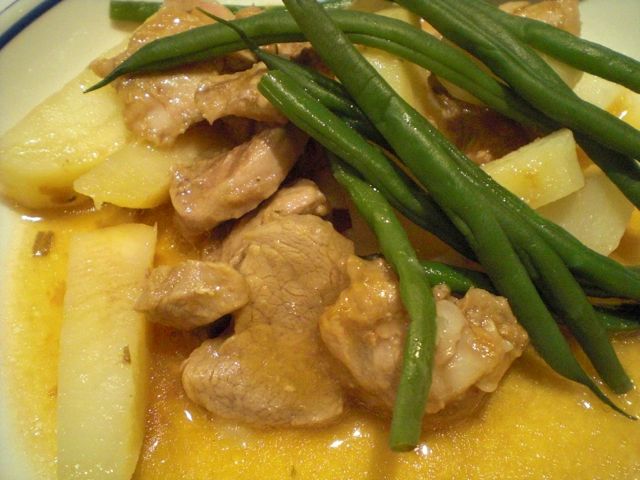Pork tenderloin: These were the trimmings from 2 pork tenderloins. I did not weigh them but I estimate it was about 4-500 grams (about 1 lb). I sliced them into 1/3 inch medallions.
Potato: We used white potatoes (4 medium). Peeled and cut it in 1/3 inch wide batons like for French fries. I soaked them in cold water to remove the excess starch on the surface and then dried them using a paper towel. I seasoned them with salt and coated with olive oil (2 tbs).
Plum sauce: I removed the meat from umeboshi or pickled plum (2) and minced it to make a paste. I mixed in soy sauce (2 tbs), mirin (1tbs), sake (1 tbs), sugar (2 tsp), dark sesame oil (2 tbs) and potato starch (2 tbs). I also added grated ginger (1/4 tsp) and grated garlic (1/2 tsp). The grated garlic was my addition, I thought I had grabbed a tube of ginger but discovered after I had put it in that it was garlic. Turns out that it added a very interesting dimension that really added to the dish.
I placed the pork tenderloin from above and mixed and marinated it in the sauce for few minutes.
Assembly: I used a deep pasta dish and made alternate layers of the potato and the pork with potato layers on the bottom and top with two pork layers.
I steamed it on medium high flame for about 30 minutes. At the last few minutes, I added haricot verts (we happened to have ones already steamed from the other night). I think any greens will do here.

We served portions as shown in the picture. This is a very good dish that could quickly enter the "comfort food" category. The pork is very tender and potato and the sauce which forms during the steaming goes so well together. The sauce has a subtle sourness from the pickled plum. My (inadvertent) addition of garlic was also good. The only problem we had was that the potato cooked a bit unevenly.


